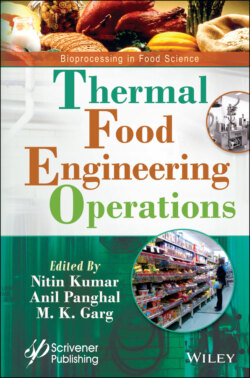Читать книгу Thermal Food Engineering Operations - NITIN KUMAR - Страница 53
2.6.4.2 Application for Inactivation in Food Sector
ОглавлениеMycotoxin decontamination from apple pomace was studied by [77], where the treatment was performed to inactivate Aspergillus niger using DIC at 0.2–0.6 MPa. The outcome of the treatment showed remarkable results by increasing the flavonoids to an extreme of 800% after the process was complete and as well as improving the drying kinetics, log reduction, and quality characteristics of the product significantly. Similarly, Salmonella and Staphylococcus aureus inactivation was evaluated by [76] in which they checked the response of instant pressure drop in skim milk and seaweed. The total time taken for treatment was 40 s and taking into the counting of the targeted organism was done through the LASAT method, and with this, the DIC method proved to be best, giving desirable outcomes in inactivating the above-mentioned microorganisms which were 100% for seaweed and more than 87% for skim milk. Another special combination case experimented with a heated air temperature of 50 °C plus the DIC by [77]. This combination was performed to confirm that the count of bacterial injury was high in the case of DIC application as compared to when no DIC treatment was done. Additionally, the scientists confirm that this process helped in preserving all the nutritional components like vitamins and minerals and hence giving the best possible results in terms of quality. Subsequently gathering and investigation the above-mentioned work we can infer that DIC plays a vital role and effectively contributes to the decontamination process of microorganism because of its mild heating system and in addition, without hampering the qualitative part of the food product.
